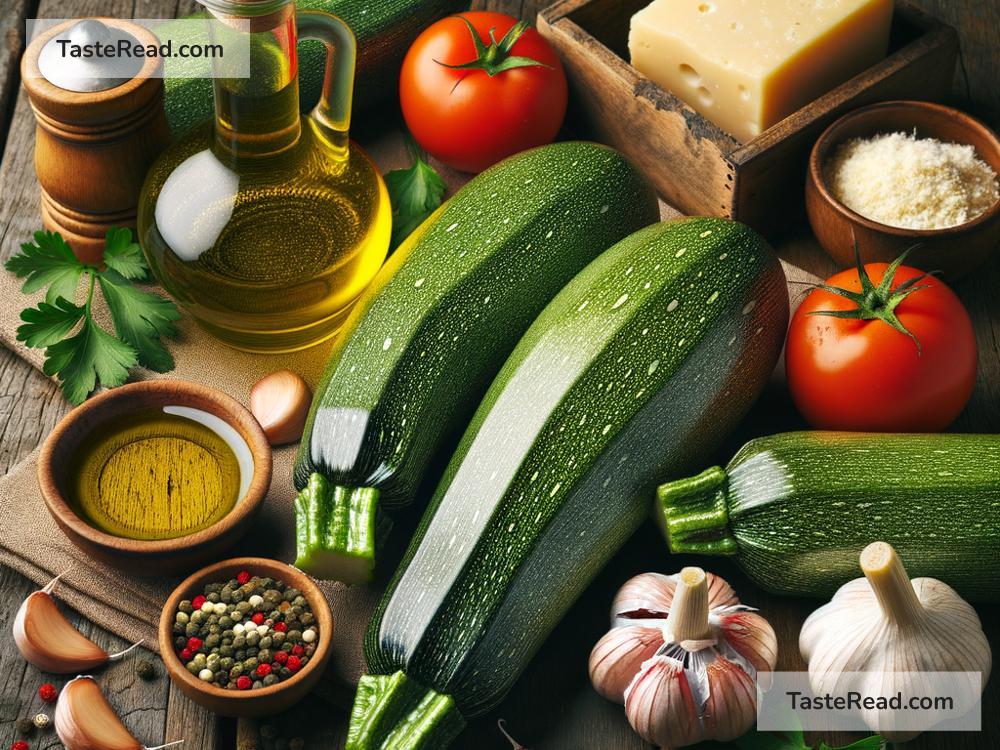The Surprising Story of Zucchinis in Italian Cuisine
When you think of Italian food, what comes to mind? Pizza, pasta, tomatoes, or maybe olive oil? You might not immediately think of zucchinis, those green vegetables that you see on your plate at family dinners or in summer salads. But zucchinis have a surprising history in Italian cuisine, one that reveals just how interconnected the world is—and how cultures adapt over time.
Zucchinis Were Not Originally Italian
It might shock you to learn that zucchinis were not originally a part of Italy’s ancient food traditions. Today, they are a central ingredient in many Italian dishes, but zucchinis only arrived in Europe after Christopher Columbus’s exploration of the Americas in the late 15th century. Like tomatoes, potatoes, and peppers, zucchinis are native to Central and South America. Italian cuisine didn’t traditionally feature them until after these groundbreaking expeditions brought them across the Atlantic Ocean.
The ancestor of zucchinis, known as a type of squash, was cultivated in Mexico and other parts of the Americas for thousands of years before Europeans ever saw it. When squash seeds arrived in Europe, Italians quickly began experimenting with the vegetable, cultivating it into what we now call “zucchini.” In fact, the word “zucchini” comes from the Italian word “zucchina,” which means “little squash.” Italians domesticated and perfected the tender, elongated variety that is so popular today.
Zucchinis and Italian Creativity
Once zucchinis became a part of Italian kitchens, they fit right in with the country’s love for fresh, seasonal ingredients. Italians are masters at turning simple foods into delicious meals, and zucchinis ended up being incredibly versatile, earning a place in countless recipes.
The vegetable became a star ingredient for its mild flavor, which can absorb spices, herbs, and sauces beautifully. Zucchinis also cook quickly, making them perfect for the fast, straightforward style of Italian cooking. Italians use them in soups, pasta dishes, risottos, frittatas, or simply grill or fry them with olive oil and garlic.
One iconic dish featuring zucchinis is “pasta with zucchini.” In this recipe, thinly sliced zucchinis are sautéed with olive oil, garlic, and sometimes onions, creating a light and flavorful sauce that pairs beautifully with spaghetti or penne. For an indulgent twist, many Italians add Parmigiano-Reggiano cheese, fresh basil, or crispy breadcrumbs.
Another cherished dish is “fiori di zucca,” or zucchini flowers. These delicate flowers grow on zucchini plants and are stuffed with cheese, battered, and fried to perfection. Zucchini blossoms are especially popular in Rome and Naples, showcasing the Italians’ ability to use every part of the plant in creative ways.
Regional Differences in How Zucchinis Are Used
Italy is known for its regional diversity in cooking, and zucchinis are no exception. In southern Italy, zucchini dishes are often paired with bold flavors like chili peppers, anchovies, or sun-dried tomatoes. For example, in Sicily, zucchinis are used in “caponata,” a rich vegetable stew with olives, capers, and eggplant. Meanwhile, in northern Italy, zucchinis tend to be cooked with cream and cheese, appearing in dishes like risotto or baked casseroles.
One particularly fascinating dish from Naples is “spaghetti alla Nerano,” a simple yet elegant pasta made with zucchinis and cheese. Legend says this dish was invented in the 1950s at a small seaside restaurant. Since then, it has become a local favorite and is gaining popularity around the world.
Zucchinis as a Symbol of Italian Summer
Even though zucchinis are available year-round at supermarkets, Italians still prefer eating them during the summer months when they are freshest. Many Italians purchase zucchinis directly from farmers or grow them in their own gardens. Garden-grown zucchinis are smaller, sweeter, and more tender than the supermarket varieties, making them perfect for lighter, healthier dishes.
During the summer, zucchinis make appearances at Italian family gatherings, picnics, and seaside lunches. They star in cold salads, grilled vegetable platters, and refreshing soups. Their connection to summer goes beyond just their fresh taste—it reflects a way of life that values slowing down, enjoying family meals, and savoring seasonal produce.
Zucchinis Around the World
While zucchinis have a special place in Italian cuisine now, their journey doesn’t stop there. Italian immigrants brought zucchini-based recipes to the United States, influencing how Americans cook this vegetable. In fact, zucchini bread and zucchini muffins—common in American kitchens—are thought to have their roots in Italian traditions of using zucchinis in versatile ways.
Similarly, modern recipes worldwide often borrow inspiration from Italian zucchini creations. Whether it’s a creamy zucchini pasta, a fresh zucchini salad, or crispy zucchini fritters, the influence of Italian creativity is everywhere.
Conclusion
The story of zucchinis in Italian cuisine reminds us of how foods evolve and cross borders. An ancient Mexican squash traveled across continents and seas, landing in Italy where it transformed into the beloved “zucchini.” Italians took this humble vegetable and turned it into a culinary treasure, proving once again their talent for simple yet delicious cooking.
Next time you enjoy a zucchini dish—whether it’s a bowl of pasta or a slice of zucchini bread—think about the journey this vegetable took to get to your plate. And perhaps draw some inspiration from Italian kitchens to try a new zucchini recipe. Who knows? You might discover a favorite dish that surprises you!


